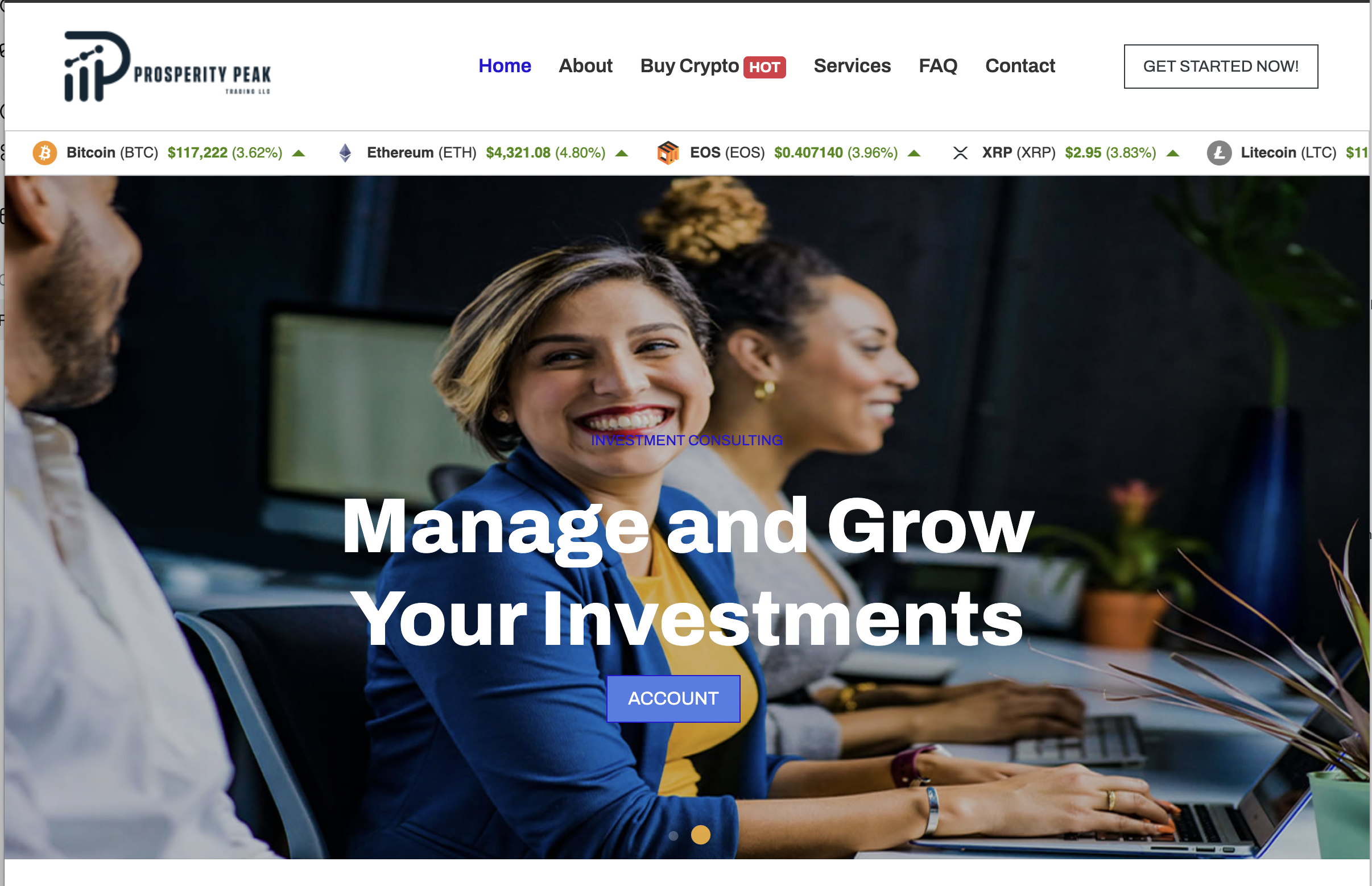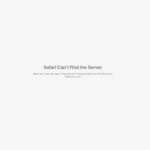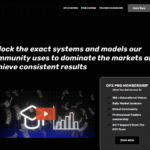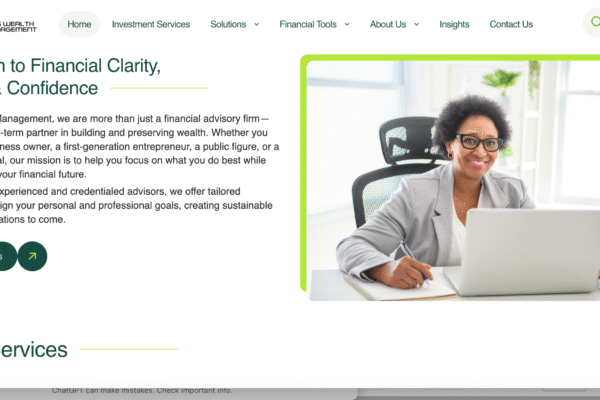Prosperity Peak Trading Review –Signs You Shouldn’t Ignore
In the sea of online investment platforms, the name Prosperity Peak Trading LLC (also styled as “PP Trading”) has popped up recently, promising strong returns, “guaranteed” profits, and easy trading for both beginners and veterans. But beneath the promotional gloss, there are multiple troubling issues—user reports, transparency gaps, regulatory absence—that suggest this platform might be more dangerous than it appears. Below is a thorough examination of what PP Trading claims, what appears dubious, and why exercising extreme caution is essential.
What Prosperity Peak Trading Claims
When you visit the PP Trading website, it offers a polished, professional presentation. Some of the main promotional claims and features include:
-
Investment consultancy and portfolio strategy services.
-
Access to trading in forex, crypto, commodities, and stocks.
-
Promises like “guaranteed ROI,” “instant withdrawals,” “fast & secure,” and “high frequency trading.”
-
Multiple funding options, shortcuts for account setup and verification.
-
Suggestion that even beginners can start trading quickly and earn profits.
These marketing claims are designed to build trust and allure: big promises, easy returns, minimal fuss. For many potential investors, these are exactly the words that entice them. But often, the real risk lies in the fine print—or the lack thereof.
Key Red Flags Around Transparency & Ownership
One of the first things to check with any investment service is who is behind it—and for PP Trading, things are murky.
Hidden or Free Email Addresses
-
The platform uses free email services (like generic mail platforms) for contact addresses. That weakens accountability: there is little to no verifiable connection between the business name and the person or entity running it.
-
Using a domain-name email is standard among legitimate firms; lacking that is a warning sign.
Domain Age and WHOIS Privacy
-
The domain is relatively new. Newer websites in a financial context have less track record, and less history means less evidence of performance or oversight.
-
Ownership data in the public domain is masked or privacy-protected in such a way that establishing legal identity is difficult. Masked WHOIS doesn’t necessarily mean fraud, but combined with other issues it heightens risk.
Conflicting or Vague Address / Jurisdiction Claims
-
The site claims to be “UK-based” or otherwise operating in regulated markets. But there are no clear, verifiable registrations or licences in those jurisdictions.
-
Physical address or registered company details are vaguely presented or missing.
-
Where a jurisdiction or regulatory body is claimed, it cannot be easily cross-checked.
All this suggests the company’s operations may depend more on appearance than on being bound by enforceable legal obligations.
Absence of Proper Regulation
Perhaps the strongest concern is that Prosperity Peak Trading is not regulated by any major, well-recognized financial authority.
-
There is no evidence of valid licensing with regulators known for enforcing investor protection (in the UK, US, EU, etc.).
-
Regulatory disclaimers are minimal; claims of “professional investment services” are not backed by regulation disclosures in registries that one would expect to see them.
-
Platforms that trade or offer financial services without oversight leave investors exposed to unfair fees, misrepresented performance, or worse, fraudulent conduct.
Regulation serves as a guardrail: it mandates transparency, sets rules for client funds, requires auditing, and provides some legal recourse. The lack of it for PP Trading is a major danger signal.
Overly Generous Promises and Unrealistic Returns
As you explore the marketing materials of PP Trading, you’ll see things like:
-
“Guaranteed ROI” or “Guaranteed profits” language.
-
Instant or fast withdrawals promised with little mention of risk or delay.
-
Offers of high returns from trading or investment in crypto, stocks, or commodities, without clear explanation of the strategy, risk, or past performance data.
In financial markets, returns are almost never guaranteed. Risk is inherent. Platforms that promote profits without equally emphasizing risk are often setting up unrealistic expectations—sometimes to lure deposits and avoid scrutiny later.
Poor or Negative User Feedback Patterns
User reports — drawn from online reviews, discussion forums, and analysis tools — raise multiple concerns:
-
Some people say they deposited funds easily, but when attempting to withdraw profits or even principal, new demands appear: extra fees, unclear “verification” or “compliance” requirements.
-
Some report that support is responsive before deposits, but becomes evasive once withdrawal requests are made.
-
Others mention that account balances or profit figures shown early may be inflated or manipulated just enough to generate trust, then barriers arise when trying to access those amounts.
These kinds of user complaints are recurring and consistent across multiple sources. It suggests not isolated mistakes, but systemic issues.
Shared Technical & Security Warnings
Beyond marketing and user feedback, there are technical and security signals that raise risk:
-
The site is hosted on shared servers. Shared hosting isn’t proof of fraud, but when financial data or investment functionality is involved, hosting on shared or low-trust servers increases vulnerability.
-
Trust rating tools (reputation checkers) give this site low scores: low domain popularity, hidden ownership information, signs of “high-risk financial content.”
-
SSL certificate is present (secure connection), which is good—but that is now common, even among weak or fraudulent sites. Having SSL doesn’t verify legitimacy beyond encryption.
-
Because many domains on the same server have low trust reviews, there’s indication that the infrastructure may host multiple high-risk or suspicious sites.
Ambiguous Terms, Conditions, and Withdrawal Policies
Often, what takes place behind the scenes are policies that are not obvious or are prone to change:
-
Terms and conditions may be vague. E.g. “instant withdrawals” is claimed, but the conditions are not clearly described (how much, what documentation, what fees).
-
Bonus or “guarantee ROI” offers often come with caveats like minimum trading volumes, bonus unlocking rules, or requirement to keep funds in the account for certain periods. Sometimes investors say these conditions are revealed only after deposit.
-
Fee structure, particularly relating to withdrawal, commission, inactive account fees, or banking/crypto processing fees, often is unclear or buried in small text.
When terms are difficult to understand or locate, the risk of surprise or unfair imposition increases.
Psychological & Marketing Tactics
PP Trading appears to employ marketing strategies designed to foster quick trust and urgency, such as:
-
Testimonials or stories of users earning large profits. These are often unverified or vague.
-
Phrases like “Earn & Get Paid,” “Guaranteed Profits,” “High Frequency Trading” to suggest sophisticated systems.
-
Multiple funding options to make deposit easy.
-
“Instant withdrawals” or “fast payout” claims to reduce hesitation among potential depositors.
These tactics are powerful — particularly when someone is seeking to invest—and can push people to commit without checking underlying legitimacy.
Risk Level: What Users Might Lose
Given all the concerning signs, what risks do users of PP Trading face?
-
The possibility that deposits may be locked up with no legitimate route to withdraw profits or even principal.
-
Hidden fees or requirements may absorb much of the profit or render withdrawal difficult or impossible.
-
Misleading balance displays—profit shown in dashboard that doesn’t match what’s withdrawable.
-
In worst cases, complete loss of investment if the platform shuts down or rebrands.
-
Loss of trust, time, and emotional cost in dealing with unresponsive or evasive support when issues arise.
Key Checklist: Warning Signs Exhibited by Prosperity Peak Trading LLC
To recap, here are the major red flags that PP Trading shows, which are commonly seen in platforms later exposed as scams:
| Warning Sign | How PP Trading Matches It |
|---|---|
| No regulation / licensing | PP is not known to be regulated by any major authority |
| Free email / hidden contact info | Uses generic or concealed email, masked ownership |
| Unrealistic “guaranteed ROI” claims | Promises of profit without risk disclosures |
| Low domain trust and new domain age | Very new domain + low trust reputation |
| Shared hosting, technical signals of risk | Hosted on shared server with other low-trust sites |
| Withdrawal & fee opacity | Users report demands for extra fees or blocked withdrawals |
| Aggressive marketing, testimonials, bonuses | Many offers and incentives to deposit with urgency |
-
Report prospeaktradingllc.com and Recover Your Funds
If you have fallen victim to prospeaktradingllc.com and lost money, it is crucial to take immediate action. We recommend Report the scam to BOREOAKLTD.COM , a reputable platform dedicated to assisting victims in recovering their stolen funds. The sooner you act, the greater your chances of reclaiming your money and holding these fraudsters accountable.
Scam brokers like prospeaktradingllc.com persistently target unsuspecting investors. To safeguard yourself and others from financial fraud, stay informed, avoid unregulated platforms, and report scams to protect. Your vigilance can make a difference in the fight against financial deception.





